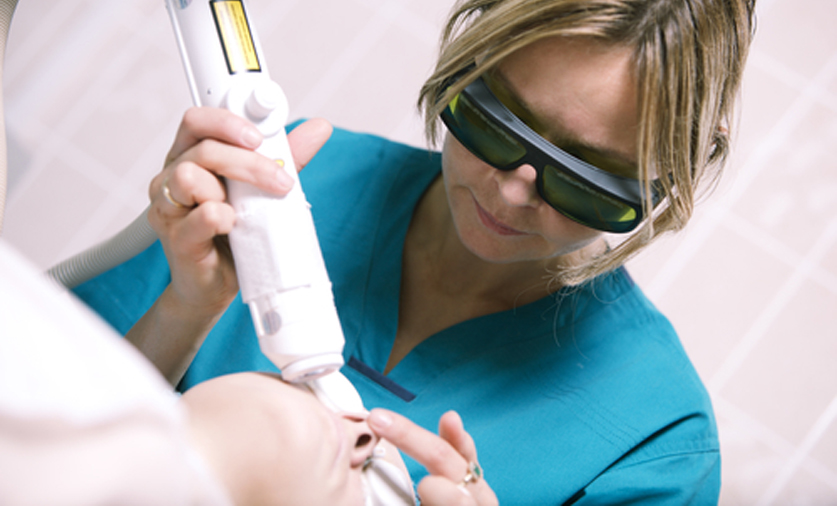Most people know skin resurfacing as microdermabrasion. However, these two clinical terms mean different. Microdermabrasion is applied to treat a wide range of common skin conditions while skin resurfacing offers a deeper level of treatment. Also known as laser skin resurfacing, this form of treatment is often used to erase age spots and acne scars, tighten the skin and reduce wrinkles as well as treat a variety of blemishes.
There are two types of lasers used in skin resurfacing and they include erbium and carbon dioxide. These two types of laser procedures vaporize damaged skin cells at the surface level. The technique involves directing short, concentrated pulsating beams of light at damaged skin removing skin layer by layer. Let’s take a closer look at the two types of laser skin resurfacing to understand what each treats.
Erbium Laser Ski Resurfacing
Plastic facial surgeons recommend erbium laser resurfacing for people who have wrinkles on the chest, neck, hands or face and also deep lines on their skin. Erbium has less side effects and it offers a much quicker recovery time than with CO2 laser resurfacing. This treatment has one main advantage. Erbium laser resurfacing does not affect the surrounding tissues since there is minimal burning. In most cases, patients who have undergone erbium laser resurfacing take only one week but this also differs with each individual. This laser is recommended for people with a darker skin tone.
CO2 Laser Resurfacing
This laser has been used for years to treat different skin issues like enlarged oil glands on the nose, warts, scars, wrinkles and other conditions. The CO2 laser resurfacing uses an ultrapulse which is a short pulsed light energy to remove thin skin layers with minimal heat damage. The healing time takes about two weeks.
Laser Skin Resurfacing For Skin Tightening
Most people looking to get a younger appearance prefer laser skin resurfacing than a facial surgery. The reason is because this procedure is much simpler and it helps to smoothen and tighten the dermal layers at the same time. The results can last for more than a year depending on a patient’s skin care efforts and the elasticity of the skin.
How Laser Skin Resurfacing Works
The laser procedure involves a number of techniques to remove thin layers of damaged skin to allow new and healthier skin to appear. Laser is the latest technique applied by cosmetic surgeons and it is better than traditional skin resurfacing approaches such as dermaplaning, dermabrasion and chemical peels. Laser causes less post-operative discomfort, bruising and bleeding. This procedure is available in a non-medical setting although patients are advised to work with experienced board-certified facial plastic surgeons.
Other Conditions That Laser Skin Resurfacing Can Treat
- Superficial facial scars as a result of a past injury
- Chicken pox or acne scars
- Certain precancerous skin growths
- Blotchy skin coloring and brown spots
- Fine wrinkling of upper eyelids
- Loose skin in lower eyelids area
- Lines around the eyes also known as “crow’s feet”
- Vertical wrinkles around the mouth
- Sun damaged facial skin
Before undergoing a laser skin resurfacing treatment, you should always consult your surgeon who will advise you what you need to do before and after the procedure. It is important to follow these instructions to ensure that you recover quickly and also avoid complications after the procedure.
